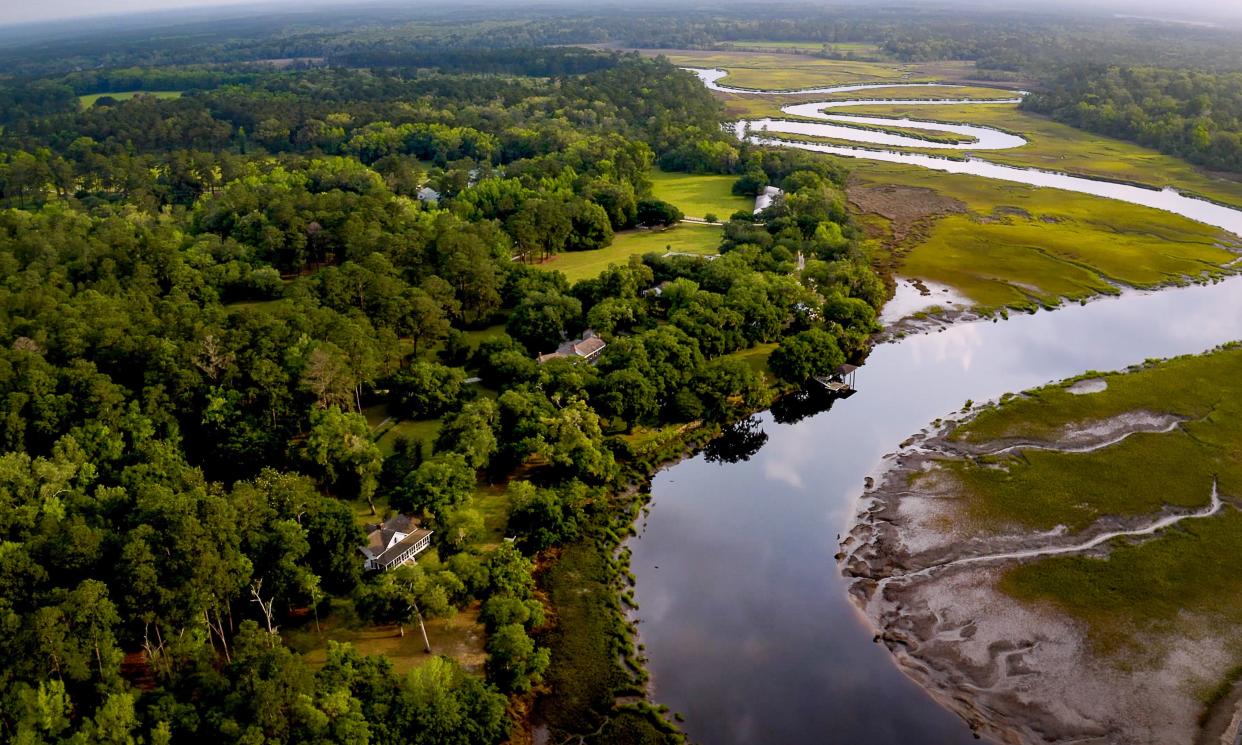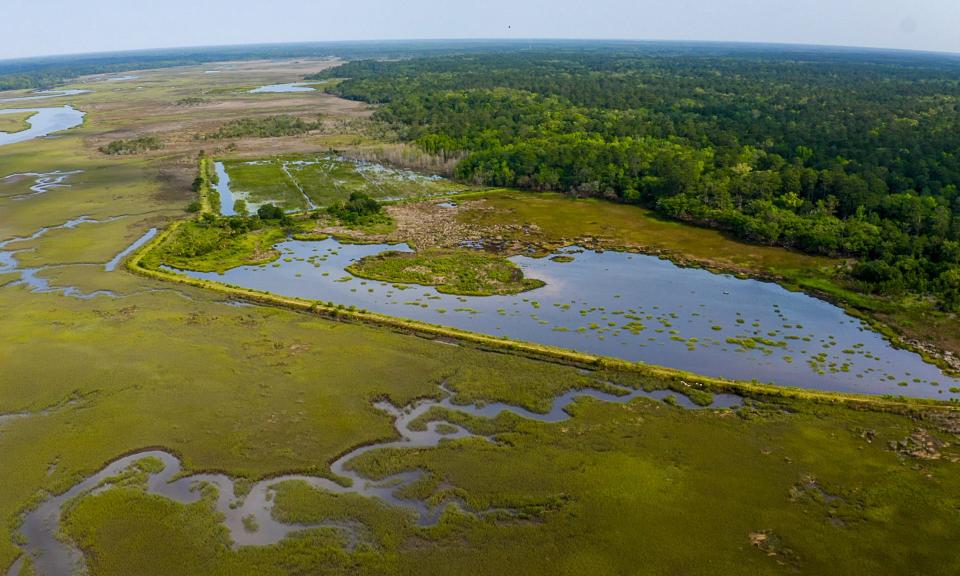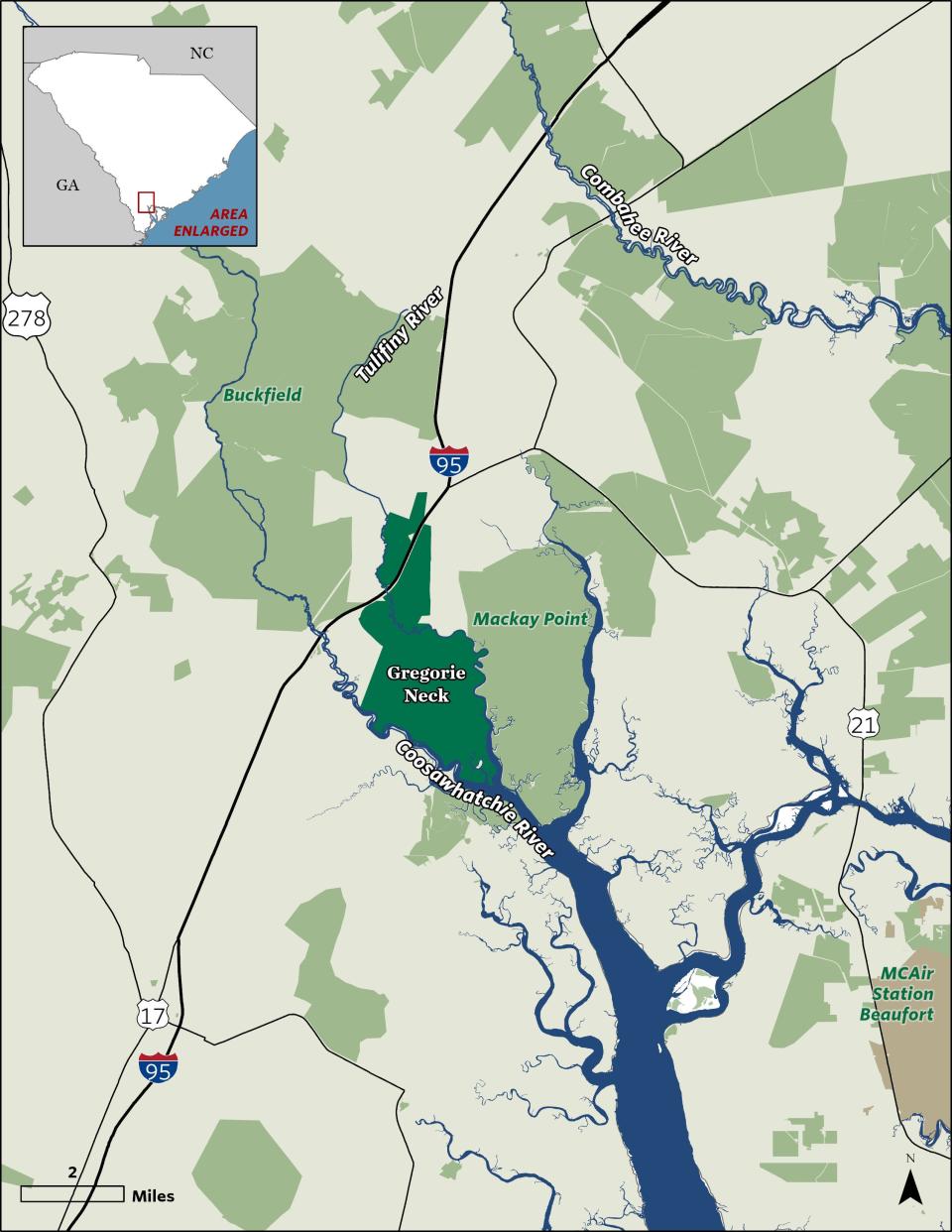$35 million deal protects 4,400-acre Lowcountry parcel ripe for development

MT. PLEASANT, SOUTH CAROLINA – One of the largest undeveloped waterfront properties in coastal South Carolina will stay that way after being purchased for $35 million by a conservation group.
The 4,400-acre tract, about 40 miles northeast of Savannah, is flanked by deep water access on the Coosawhatchie and Tulifiny rivers, and bisected by Interstate 95.
The property, known as Gregorie Neck, will be protected permanently by a conservation easement, according to the Nature Conservancy in South Carolina.
The announcement comes as a moratorium on new commercial and residential development in South Carolina's Jasper County is set to expire, coastal Georgia and South Carolina experience an automobile manufacturing boom, and waves of new warehouses to handle cargo offloaded at the Port of Savannah flood the I-95 corridor.
A $5.5 billion Hyundai electric vehicle assembly plant is under construction near I-95 in Georgia's Bryan County – and bringing with it companies that will supply components and support services.
At the same time, roughly 200 million square feet of warehouse space is either operating or under construction in coastal Georgia and across the Savannah River in Jasper County, according to data compiled late last year by a coalition of environmental organizations.
And at the same time, residential and commercial development in the South Carolina Lowcountry continues to sprawl west toward I-95 from the booming Hilton Head Island area.
“This region is experiencing such intense growth (that) when we saw the opportunity to protect a property like this – with so much water frontage and direct interstate access – we knew we had to make it happen,” Dale Threatt-Taylor, executive director of TNC in South Carolina, said in the announcement. “Developing Gregorie Neck would have had a huge impact on this region’s nature and wildlife, as well as its infrastructure needs and traffic.”
More conservation: Preservation of 1,200 acres aims to protect Savannah River
'Under intense development pressure'
Gregorie Neck – named for Alexander Gregorie, who acquired the property in 1798 – has been managed for the last 30 years by philanthropists Bob and Alice Jepson of Savannah to “promote the property’s vast conservation values,” TNC in South Carolina said.
Upland forests of large pines and hardwoods that have not been harvested in decades, along with wetlands along the rivers’ edges, provide critical habitat for wading birds and migratory waterfowl, while open fields support livestock and songbirds, the organization said.
“The variety and condition of Gregorie Neck’s ecosystems are remarkable,” said David Bishop, TNC in South Carolina’s coastal and midlands conservation director.
Even more significant, he added, is how the property fits into a growing “green band” connecting undeveloped land in the Savannah River Basin with those in the ACE Basin.
“That band is under intense development pressure and is critical to protect water quality in Port Royal Sound and ensure wildlife have enough healthy habitat,” Bishop said.
To the east of Gregorie Neck, across the Tulifiny River, is the 6,736-acre Mackay Point tract, which is protected under a conservation easement by the Lowcountry Land Trust. To the northwest sits the 12,000-acre Buckfield property, preserved by the Nature Conservancy and Open Space Institute.

Tract has rich history, secure future
Property and historical records reveal a portion of Gregorie Neck lies in the footprint of the Battle of Tulifiny, a Civil War conflict during Union Maj. Gen. Sherman’s “March to the Sea.”
An estimated 5,000 Union troops and 900 Confederates were involved.
The Confederate contingent included the entire Corps of Cadets from the South Carolina Military Academy, now known as The Citadel, marking it the only time an entire student body of a U.S. college fought in combat.
TNC South Carolina said it has secured an agreement with the Beaufort, South Carolina-based Open Land Trust to place the property under a conservation easement, which will permanently limit development to no more than six homesteads.
When the easement is in place, TNC will divest the property, including existing waterfront homes and outbuildings.
“Permanent land protection with a conservation easement will protect the over 13 miles of river frontage and the property’s rural character forever,” said Kristin Williams, executive director of the Open Land Trust. “Today is a victory for landscape-scale conservation because this property is truly the heart of the Port Royal Sound, waters on which all of Beaufort and Jasper (counties) depend, and the heart of the protected connected greenbelt around Beaufort, Jasper and our military bases.”
Creating buffer for bases
The U.S. Department of Defense announced earlier this month that it would award the Gregorie Neck project a $6 million Readiness and Environmental Protection Integration challenge grant. The REPI funding aims to prevent incompatible development and protect landscapes in the vicinity of the Marine Air Corps Station Beaufort.
The Open Land Trust has applied for other grants to help fund the project.
“We hope the protection of Gregorie Neck encourages other large landowners on the Port Royal Sound to work toward conservation outcomes,” said TNC South Carolina’s Bishop. “We have a rare opportunity to protect our natural resources and sense of place in the Port Royal Sound and encourage development in the right places. That opportunity closed a long time ago in other coastal communities.”
John Deem covers climate change and the environment on the Georgia coast. He can be reached at jdeem@gannett.com

This article originally appeared on Savannah Morning News: 4,400-acre SC tract northeast of Savannah preserved with $35M deal

